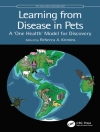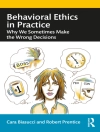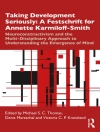This book synthesizes the best of the new research related to anxiety disorders and how they are classified and diagnosed. Dr. Dean Mc Kay and his co-editors have brought together leading authorities from multiple theoretical traditions to present the new directions and perspectives in the field of anxiety research.
The contributors also discuss why current classification systems are inadequate, and what revisions should be made. The book presents in-depth discussions of how anxiety disorders are understood and assessed, as well as potential new implications for DSM-V.
Key features:
- Covers the existing descriptive approach to the study of anxiety disorders, its adequacy in diagnosis, and its limitations
- Discusses the major theoretical and methodological approaches used to assess anxiety, such as fear circuitry, taxometric methods, actigraphy, neuroscience, and behavioral genetics
- Reviews diagnostic and classification controversies that center on specific anxiety disorders, such as obsessive-compulsive disorder, social anxiety, posttraumatic stress disorder, and worry
This book covers the full spectrum of theoretical and empirical approaches used in the study, diagnosis, and classification of anxiety problems. In short, this volume serves as the authoritative reference book on the conceptualization and diagnosis of anxiety disorders.
Innehållsförteckning
’
Part I: A Look Back at a Quarter Century of the Descriptive Model of Classification
Chapter 1 Current Perspectives on Anxiety Disorders: Models and Methods in Anticipation of DSM-V
Chapter 2 Historical Perspectives on Psychiatric Classification and Anxiety Disorders
Chapter 3 Neo-Kraepelinian Diagnosis: Adequacy for Phobias and Panic
Chapter 4 Neo-Kraepelinian Diagnosis: Adequacy for OCD, GAD, and PTSD
Part II: Empirical and Theoretical Perspectives on Diagnosis
Chapter 5 The Amygdala Networks of Fear: From Animal Models to Human Psychopathology
Chapter 6 Behavioral Genetics: Strategies for Understanding the Anxiety Disorders
Chapter 7 Empirical Approaches to the Study and Classifi cation of Anxiety Psychopathology
Chapter 8 The Role of Actigraphy in Diagnosing Anxiety Disorders
Chapter 9 Information Processing and Neuroscience Featuresof Anxiety: Refining the Bases for Diagnosis
Chapter 10 Cultural Anthropology and the Anxiety Diagnoses
Chapter 11 Rethinking the Anxiety Disorders in DSM-V and Beyond: Quantitative Dimensional Models of Anxiety and Related Psychopathology
Chapter 12 Developmental Perspectives on Anxiety Classification
Part III: Classification and Specific Anxiety Problems
Chapter 13 The ObsessiveñCompulsive Spectrum: A Critical Review
Chapter 14 Classification of Worry and Associated Psychopathology
Chapter 15 PTSD and Other Posttraumatic Syndromes
Chapter 16 Social Anxiety Disorder and the DSM-V
Chapter 17 Classification of Hypochondriasis and Other Somatoform Disorders
Chapter 18 Classifi cation of Anxiety Disorders: Treatment Implications
Chapter 19 Classifi cation of Anxiety Disorders for DSM-V and ICD-11: Issues, Proposals, and Controversies
’
Om författaren
Gordon J. G. Asmundson, Ph D, RD, Psych is currently a full-time Professor of Psychology at the University of Regina, and an Adjunct Professor of Psychiatry at the University of Saskatchewan, a Canadian Institutes of Health Research (CIHR) Investigator, and the leader of a CIHR New Emerging Team focusing on mechanisms and treatment of PTSD.












